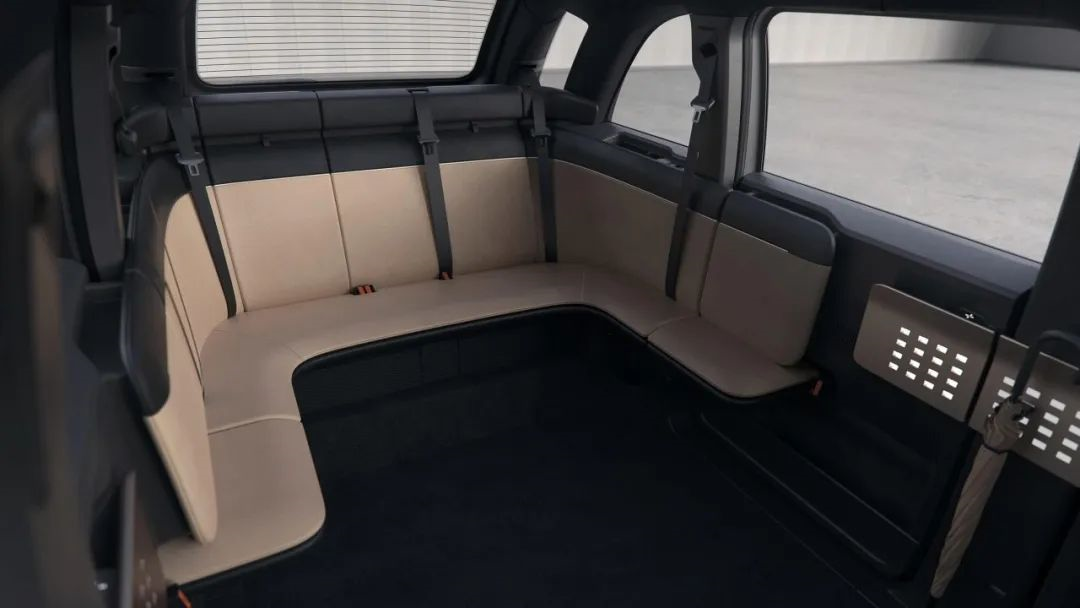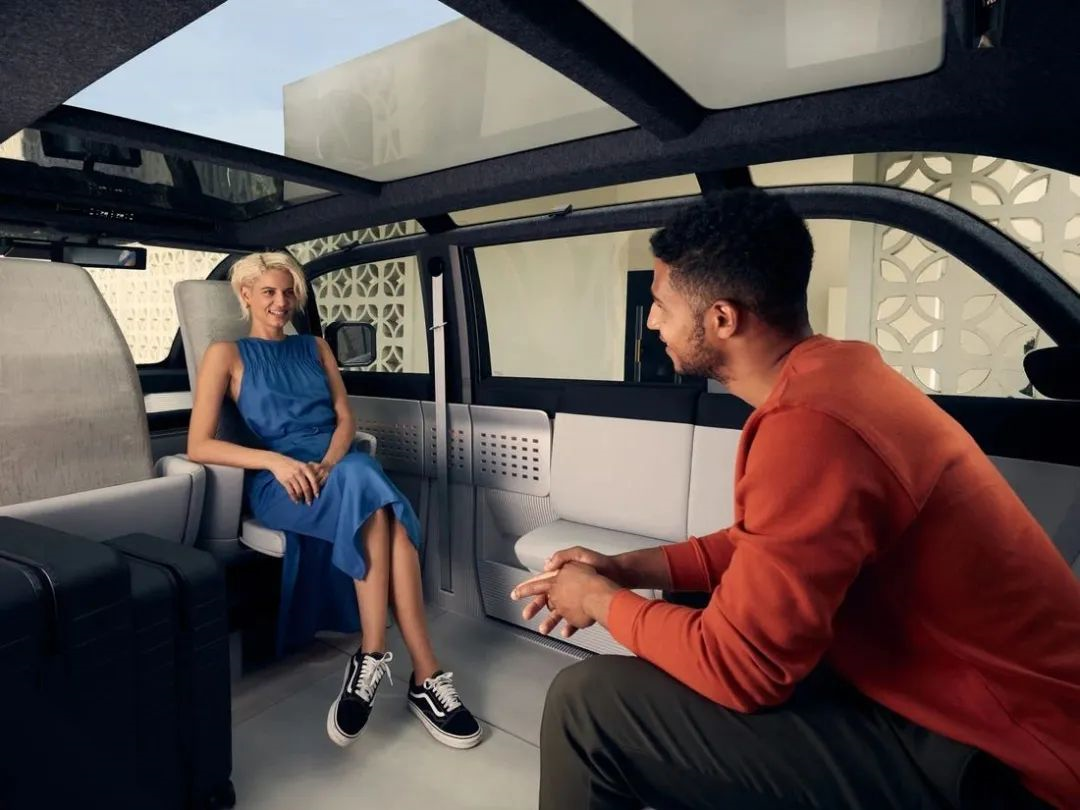What kind of talent does the automotive industry lack the most in 2022?
Is it a programmer who is proficient in algorithms or an electric propulsion system engineer? Neither of them. The most lacking talent is a space magician. Take a look at the recent debate between Li Xiang and Yang Xueliang on Weibo about the third-row space of the NIO ES9. Obviously, both of them want to prove that they are the “space magician” who deserves the title, and even Zhao Changjiang, the boss of DENZA, couldn’t help but join in.

The argument and duels between the leaders of car companies always ignite interest in a particular technology or vehicle category. 2022 is also known as the first year of domestic high-end MPV, because a large number of domestic brands have emerged in this market that has been long dominated by European, American, and Japanese car companies. At the same time, with the advantage of electrification, each company’s products are ready to be astounding, and it is inevitable to compare them to the “price-hiking demon” Toyota Alphard in the PowerPoint.
When everyone is ready to make a big splash, we have a question. Is the middle and high-end MPV market ready to explode or is it just a delusion?
Can the market with an annual sale of 300,000 cars accommodate so many new players?
First, let us take a question, how big is the MPV market?
According to the data from China Association of Automobile Manufacturers, the sales peak of China’s MPV market from 2011 to 2021 was 2.497 million units per year, and in recent years it has fallen to around one million units per year. Compared with the two major categories of sedans and SUVs, the one million MPV market is not large, and the mid-to-high-end MPV is a niche category.
“MPVs priced above 200,000 are called MPVs, while those priced below 200,000 are called Microvans or Jinbei.“
In fact, because of the ambiguous market segmentation, some products in the one million MPV market are still microvans and light buses. Therefore, the market space for domestic brands to penetrate is small.
 In addition, the middle and high-end MPV market is a market that relies heavily on head products, such as the popular Honda Odyssey, Buick GL8, Toyota Sienna, and Mercedes-Benz V-Class, among others. According to sales statistics in 2021, the Buick GL8 is at the top with annual sales of 170,000 units, and the following sales show a cliff-like decline.
In addition, the middle and high-end MPV market is a market that relies heavily on head products, such as the popular Honda Odyssey, Buick GL8, Toyota Sienna, and Mercedes-Benz V-Class, among others. According to sales statistics in 2021, the Buick GL8 is at the top with annual sales of 170,000 units, and the following sales show a cliff-like decline.
When adding up the sales of all the top middle and high-end MPV products that we can think of, it’s found that the market share of the middle and high-end MPV market is no more than 300,000 units per year.
The data provided by the China Association of Automobile Manufacturers (CAAM) also confirms our speculation. Based on the sales performance of the MPV sub-segment market, the market share of the C-class MPV (mid-size MPV) is between 25% and 35%. In an environment where the size and positioning are the determining factors, the C-class MPV corresponds to the middle and high-end MPV market. Moreover, the annual sales of 300,000 units are the ceiling for this category.
At the same time, it is widely believed that the two-child policy will stimulate demand for middle and high-end MPVs, but the reality is not as expected. The sales data for MPVs in January to October 2022 is trending downward compared with the same period in 2021.
We can also observe that the head products in the middle and high-end MPV market have extremely accurate user portraits. For example, the Buick GL8 is often used in business scenarios, the Honda Odyssey is relatively economical and practical for families, and the Toyota Alphard and Mercedes-Benz V-Class are often used as star managers’ vehicles. Of course, this market rule is not 100% accurate, but it will invariably influence consumers’ final decisions when purchasing vehicles.
When we break down and analyze the products by positioning, we find that the sales of products targeted at the commercial market are 3-3.5 times that of products targeted at families. Therefore, many automakers have already realized the current market situation, and the family-oriented middle and high-end MPVs have yet to become popular. Therefore, many products are still indecisive in positioning, as they want to try the market space of family MPVs but do not want to give up the broader commercial MPV market.The most obvious example is the JiKe 009, which, in its launch event, benchmarked the Toyota Alphard in many ways. However, it also carefully considered the details and thought about the needs of parents, which is why it integrates online course materials into its rear entertainment screen.
In fact, the “all-in” product strategy is not realistic for MPV products. On one hand, to compete with products like the Alphard, they need to raise their prices and brand value, otherwise it will be hard to get the bosses’ favor. On the other hand, raising prices makes them less competitive than products like the Honda Odyssey.
From a market perspective, the large-scale layout of self-owned car companies in the high-end MPV market is more like self-entertainment. They need to face a narrow competitive space, still-growing family needs, perplexing product positioning, and fierce competition from rivals. Just this year alone, a number of high-end MPVs were released, including the JiKe 009, Voyah Dreamer, DENZA D9, SAIC Maxus MIFA 9, and Hongqi HQ9.
Therefore, getting involved in the MPV market now is clearly a foolish decision, yet why are people so keen on this niche category?
From my perspective, I believe this can be viewed from both technological and brand aspects.
Combining Pure Electric and Large Space to Release Imagination for Intelligent Cabin
Five years ago, there was a view in the automotive design industry that, after the electrification has been fully popularized, the mobility box would be the trend for future automotive development. At some point in the future, the car we ride in will become a moving box.
Why a box? With the gradual formation of intelligent driving technology, the car is likely to become a complete tool, and when users no longer think much about the driving experience, the design will become simpler. At the same time, users will pay more attention to the experience inside the car.
The box shape will release more space, and the larger space will correspond to more possible seat layouts. There may also be more unexpected equipment appearing in the car, such as playing VR games in the back of a van, as shown in the movie “Ready Player One”.Markdown Text:

Currently, MPV is the product that is most close to boxy styling and also the car category with the largest space. For the next stage of intelligent cabin, most automakers have opened up their own imagination. For example, the rear entertainment screen that appeared on the Ideal L9 is now also used on many medium and high-end MPVs. This is accompanied by more innovative interactive methods such as 3D ToF.
At the same time as the space is improved, more attention has been paid to the ride experience. Many automakers that create medium and high-end MPVs are spending a lot of effort to upgrade the comfort of the seats. They are also brainstorming how to improve the riding experience of the third-row passengers, and how to maximize convenience while ensuring the comfort of the second-row passengers.
In other words, medium and high-end MPVs have extremely strong experimental properties. Space is an absolute hotbed for breeding new technologies and new thinking of intelligent cabins.

MPV is also a tool for domestic brands to move up
There are two major hot-selling models in the Chinese auto market, one is the Toyota Alphard and the other is the Mercedes-Benz G-Class SUV. The price premium represents the existence of acceptable premium space for similar models. For domestic brands, what their products lack the most is the ability to charge a premium. Possessing the ability to charge a premium also represents an improvement in brand power.
Creating medium and high-end MPV models is an opportunity for brand upgrading. The medium and high-end MPV is a more expensive category of single-car prices, and the entry threshold is around 250,000 yuan. The reason why domestic brands have not entered this market on a large scale before is that the brand image at that time cannot support the positioning of this product.
In 2022, MPV has become a hot market. From the side, MPV is also a tool for domestic brands to move up, using users’ recognition of the Alphard and Mercedes-Benz V-Class to express the intention of domestic brands to achieve high-end.
Finally“`markdown
Of course, our independent brand also has the ability to reach high-end market. In the two core areas of intelligence and electrification, we have mastered most of the core technologies and also have a sound supply chain.
However, the mid-to-high-end MPV market is relatively conservative, and the invulnerable position may make the product lag behind the times. Now, independent brands are needed to roll into the market like a catfish and provide users with a better experience on MPV products.
In the end, consumers will always benefit from this “fishing” approach.
“`
This article is a translation by ChatGPT of a Chinese report from 42HOW. If you have any questions about it, please email bd@42how.com.
